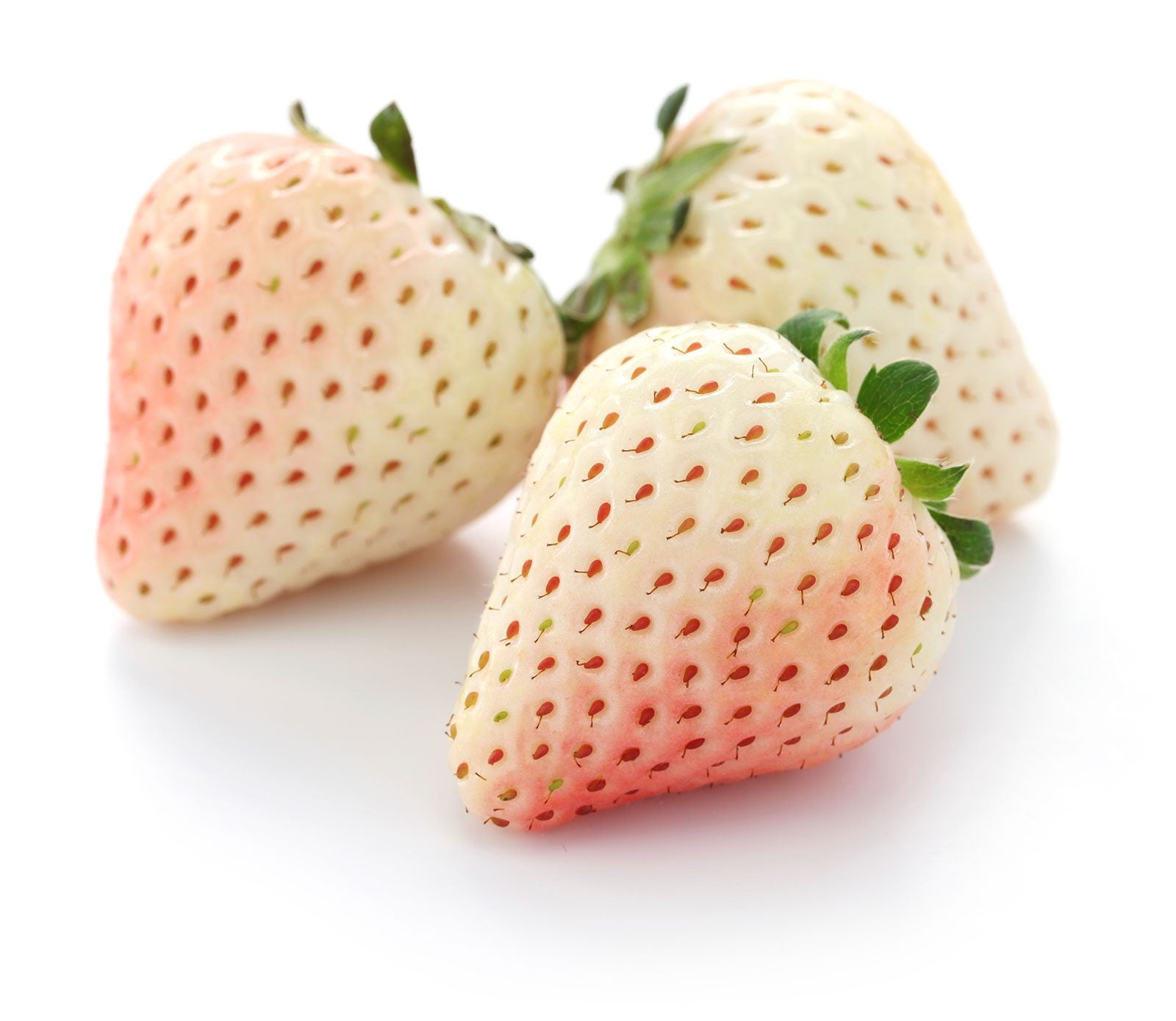White Strawberry Plants: Tips For Growing White Strawberries

There’s a new berry in town. Okay, it’s not really new but it certainly may be unfamiliar to many of us. We’re talking the white strawberry plants. Yes, I said white. Most of us think of luscious, juicy red strawberries, but these berries are white. Now that I’ve piqued your interest, let’s learn about growing white strawberries and what types of white strawberries are available.
Types of White Strawberries
Probably one of the more commonly grown, the white alpine strawberry is one of several varieties of white strawberries. Before we get into that, let’s get a little background on white strawberries in general. While there are several varieties of white strawberry, they are hybrids and don't grow true from seed. There are two strawberry species, Alpine (Fragaria vesca) and Beach (Fragaria chiloensis), that are true white strawberries. F. vesca is native to Europe and F. chiloensis is a wild species native to Chile. So why are they white if they are strawberries? Red strawberries begin as small white flowers that turn into pea-sized green berries. As they grow, they first turn white and then, as they mature, begin to take on a pink and finally a red color when completely ripe. The red in the berries is a protein called Fra a1. White strawberries are simply lacking in this protein, but for all intents and purposes retain the essential look of a strawberry, including the flavor and the aroma, and can be used in much the same ways as their red counterpart. Many people have allergies to red strawberries, but what about a white strawberry allergy. Since white strawberries lack the protein that results in pigment and which is responsible for strawberry allergies, it is likely that a person with such allergies can eat white strawberries. That said, anyone with an allergy to strawberries should err on the side of caution and test this theory out under medical supervision.
White Strawberry Varieties
Both alpine and beach strawberries are wild species. Among the white alpine strawberry (member of the species Fragaria vesca) varieties, you'll find:
- Albicarpa
- Krem
- Pineapple Crush
- White Delight
- White Giant
- White Solemacher
- White Soul
White beach strawberries (member of the species Fragaria chiloensis) are also referred to as coastal strawberries, wild Chilean strawberries, and South American strawberries. Beach strawberries were cross bred to result in today’s familiar red strawberry varieties. Hybrids of the white strawberry include the white pineberries (Fragaria x ananassa). If these ripen in the sun, however, they turn a pinkish hue; therefore, anyone with strawberry allergies should not consume them! The flavor of these berries is a unique blend of pineapple and strawberry. Pineberries originate in South America and were brought to France. They are now enjoying resurgence in popularity and popping up all over, but with limited availability in the United States. Another Fragaria x ananassa hybrid, Keoki is similar to pineberry but without the pineapple note. The hybrid varieties tend to be sweeter than the true species, but all the white strawberry varieties have similar notes of pineapple, green leaves, caramel, and grapes.
White Strawberry Growing
White strawberries are easy perennial plants to grow either in the garden or in containers. You should plant them in an area that is sheltered from potential late spring frosts and in an area of about six hours of sunlight. Plants can be started indoors as seed or purchased as transplants. Transplant in the spring or fall when the minimum outdoor soil temperature is 60 degrees F. (15 C.). All strawberries are heavy feeders, especially of phosphorus and potassium. They enjoy well-drained, loamy soil and should be fertilized as necessary. Plant the transplants until the root is completely covered with soil and the crown is just above the soil line. Water them in well and continue to maintain a consistent source of irrigation, about 1 inch (2.5 cm.) a week and ideally with a drip irrigation system to keep the water off the leaves and fruit, which can foster fungus and disease. White strawberries can be grown in USDA zones 4 through 10 and will attain a height of between 6 and 8 inches (15-20 cm.) tall by 10 to 12 inches (25-31 cm.) across. Happy white strawberry growing!
Gardening tips, videos, info and more delivered right to your inbox!
Sign up for the Gardening Know How newsletter today and receive a free copy of our e-book "How to Grow Delicious Tomatoes".

Amy Grant has been gardening for 30 years and writing for 15. A professional chef and caterer, Amy's area of expertise is culinary gardening.
-
 8 Noteworthy Native Azaleas Every Gardener Should Know – And Grow!
8 Noteworthy Native Azaleas Every Gardener Should Know – And Grow!Native azaleas offer brilliant blooms in a range of colors and sizes. Here are a few favorites to get inspired and start working on a native shade garden!
-
 Growing Climbing Roses: How To Create Elegant Displays With Maximum Blooms
Growing Climbing Roses: How To Create Elegant Displays With Maximum BloomsMaster the art of growing stunning climbing roses with this essential guide to creating vibrant, fragrant walls and structures all summer long.